| 4 April |
• yesterday • tomorrow |
| Optional Memorial of Saint Isidore of Seville, Bishop |
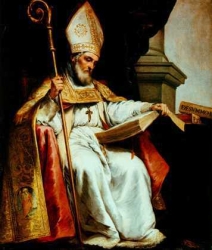
• Isidore the Bishop
• Schoolmaster of the Middle Ages
15 December (translation of relics)
Son of Severianus and Theodora, people known for their piety. Brother of Saint Fulgentius of Ecija, Saint Florentina of Cartagena, and Saint Leander of Seville, who raised him after their father's death. Initially a poor student, he gave the problem over to God and became one of the most learned men of his time. Priest. Helped his brother Leander, archbishop of Seville, in the conversion the Visigoth Arians. Hermit.
Archbishop of Seville, Spain c.601, succeeding his brother to the position. Teacher, founder, reformer. Required seminaries in every diocese, and wrote a rule for religious orders. Prolific writer whose works include a dictionary, an encyclopedia, a history of Goths, and a history of the world beginning with creation. Completed the Mozarabic liturgy which is still in use in Toledo, Spain. Presided at the Second Council of Seville, and the Fourth Council of Toledo. Introduced the works of Aristotle to Spain.
Proclaimed Doctor of the Church by Pope Benedict XIV in 1722, and became the leading candidate for patron of computer users and the internet in 1999.
c.560 at Cartagena, Spain
4 April 636 at Seville, Spain
• computer technicians
• computer users
• computers
• the Internet
• schoolchildren, students
• bees
• bishop holding a pen while surrounded by a swarm of bees
• bishop standing near a beehive
• old bishop with a prince at his feet
• pen
• priest or bishop with pen and book
• with Saint Leander, Saint Fulgentius, and Saint Florentina of Cartagena
• with his Etymologia
Prayer purifies us, reading instructs us. Both are good when both are possible. Otherwise, prayer is better than reading. If a man wants to be always in God's company, he must pray regularly and read regularly. When we pray, we talk to God; when we read, God talks to us. All spiritual growth comes from reading and reflection. By reading we learn what we did not know; by reflection we retain what we have learned. Reading the holy Scriptures confers two benefits. It trains the mind to understand them; it turns man's attention from the follies of the world and leads him to the love of God. The conscientious reader will be more concerned to carry out what he has read than merely to acquire knowledge of it. In reading we aim at knowing, but we must put into practice what we have learned in our course of study. The more you devote yourself to study of the sacred utterances, the richer will be your understanding of them, just as the more the soil is tilled, the richer the harvest. The man who is slow to grasp things but who really tries hard is rewarded, equally he who does not cultivate his God-given intellectual ability is condemned for despising his gifts and sinning by sloth. Learning unsupported by grace may get into our ears; it never reaches the heart. But when God's grace touches our innermost minds to bring understanding, his word which has been received by the ear sinks deep into the heart. - from Book of Maxims by Saint Isidore
Heresy is from the Greek word meaning 'choice'.... But we are not permitted to believe whatever we choose, nor to choose whatever someone else has believed. We have the Apostles of God as authorities, who did not...choose what they would believe but faithfully transmitted the teachings of Christ. So, even if an angel from heaven should preach otherwise, he shall be called anathema. - Saint Isidore
If a man wants to be always in God's company, he must pray regularly and read spiritual books regularly. When we pray, we talk to God; when we read, God talks to us. – Saint Isidore
https://catholicsaints.info/saint-isidore-of-seville/
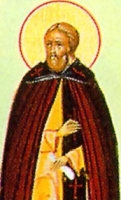
Platon
Plato's wealthy parents died of disease before he was 13. Raised and educated by an uncle who was a treasurer, and Plato soon handled much of his uncle's business. Excellent student. Pious from youth, he turned away from the world of the royal court, freed his slaves, sold his estates, gave the money to his sisters and the poor, and at age 24 he moved to the monastery at Symbolean on Mount Olympus, though he never took holy orders and remained a layman. He spent his days in prayer, menial labour, and copying holy books. Abbot in 770. Given to severe fasts and self-deprivation.
In 775 Plato made a journey to Constantinople on business, and managed to inspire many of the citizens of all stations to better, more pious lives. The patriarch Paul tried to make him bishop of Nicomedia, but Plato retreated to his monastery.
His sister Theoctista's entire family embraced a religious state, founded a monastery of Saccudion, near Constantinople, and prevailed upon Plato to direct it in 782. In 794 he turned it over to his nephew, Saint Theodorus.
The emperor Constantine repudiated his empress, Mary, and married Theodota, a relative of Plato; Plato and Theodorus published a sentence of excommunication against him. Joseph, the treasurer of the church, and several other mercenary priests and monks, tried to convince Plato to approve the emperor's divorce, but he refused, scolded the emperor to his face, and was imprisoned until Constantine's death in 797.
In the face of the Saracen invasions, the monks of Saccudion abandoned their settlement for Studius where Plato vowed obedience to his nephew Theodorus, and lived as a recluse in a narrow cell, in perpetual prayer and manual labor, one foot fastened to the ground with a heavy iron chain which he hid with his cloak when anyone came to see him.
In 807, Joseph, the priest who had presided at the wedding of Constantine and Theodoat, was restored to his position and made treasurer of the church by order of emperor Nicephorus. Plato considered this scandalous, and loudly condemned it. The emperor had him guarded for a year by a troop of insolent soldiers and false monks after which Plato was unjustly condemned by a council of court bishops, then banished to be conducted from place to place in the isles of Bosphorus for four years until freed in 811 by the new emperor Michael I. Plato then returned to his cell and his life of prayer.
In 813, Plato saw that his end was near, directed his grave be dug, had himself carried to it, lived laying in it, spending his last days in prayer and receiving guests from his grave including his former enemy, the priest Joseph who came to ask for Plato's prayers.
c.734
• 19 March 813 of natural causes
• funeral obsequies were performed by Saint Nicephorus
https://catholicsaints.info/saint-plato/
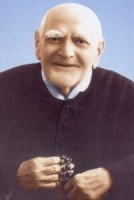
Cajetan Catanoso
20 September
Born to a wealthy, pious family. Ordained on 20 September 1902, he served as a parish priest. Established a Confraternity of the Holy Face in his parish, which spread through a newsletter launched in 1920. Founded the Poor Clerics to encourage priestly vocations. Transferred to Santa Maria de la Candelaria parish in Reggio Calabria, Italy in 1921. There he revived Marian and Eucharistic devotions, improved catechesis, and worked for observance of liturgical feasts. Worked for cooperation among local priests to provide missions by preaching and hearing confessions in each others parishes. Spiritual director for several religious institutions, a prison, hospital and seminary for decades. Founded the Congregation of the Daughters of Saint Veronica (Missionaries of the Holy Face) in 1935 to teach, offer perpetual prayers, and work with the poor; they received diocesan approval in 1958.
14 February 1879 at Chorio di San Lorenzo, Reggio Calabria, Italy
4 April 1953 in Reggio Calabria, Italy of natural causes
23 October 2005 by Pope Benedict XVI at Rome, Italy
Reggio Calabria, Italy (given on 10 March 2010)
Saint Gaetano Catanoso was a lover and apostle of the Holy Face of Jesus. “The Holy Face”, he affirmed, “is my life. He is my strength”. With joyful intuition he joined this devotion to Eucharistic piety. He would say: “If we wish to adore the real Face of Jesus…, we can find it in the divine Eucharist, where with the Body and Blood of Jesus Christ, the Face of Our Lord is hidden under the white veil of the Host”. Daily Mass and frequent adoration of the Sacrament of the Altar were the soul of his priesthood: with ardent and untiring pastoral charity he dedicated himself to preaching, catechesis, the ministry of confession, and to the poor, the sick and the care of priestly vocations. To the Congregation of the Daughters of Saint Veronica, Missionaries of the Holy Face, which he founded, he transmitted the spirit of charity, humility and sacrifice which enlivened his entire life. – from the canonization homily by Pope Benedict XVI, 23 October 2005
https://catholicsaints.info/saint-gaetano-catanoso/

• Benedict of Palermo
• Benedict of San Philadelphio
• Benedict of Sanfratello
• Benedict the African
• Benedict the Moor
His parents, Christopher and Diana, were slaves who had been taken from Africa to Sicily. Benedict was granted his freedom at age 18, but remained as an employee of his former master. Scorned and mocked by others as poor as himself, due to his origin and skin, he retained a natural cheerfulness.
He met with, and became enamored of a group of Franciscan hermits near Palermo. Benedict sold what little he had, gave away the money to the poor, and joined this group. Novice master and reluctant superior of the friars in Palermo. When his term ended, he happily returned to working in the friary kitchen. Benedict never referred to possessions as "mine" but always "ours." He had gifts for prayer and the guidance of souls. His humility and cheerfulness set an example that helped reform his order. On his death, King Philip III of Spain paid for a special tomb for the simple friar.
Benedict was not a Moor, but the Italian "il Moro" for "the Black" has been misinterpreted as referring to a Moorish heritage.
1526 at Messina, Italy on the estate of Chevalier de Lanza a San Fratello
• 1589 of natural causes
• body reported incorrupt when exhumed several years later
15 May 1743 by Pope Benedict XIV
24 May 1807 by Pope Pius VIII
• African missions
• African-Americans
• black people
• Palermo, Sicily, Italy
https://catholicsaints.info/saint-benedict-the-black/
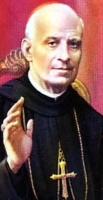
Born to the Sicilian nobility, the son of Marquis Luigi Dusmet. Educated at the abbey of San Martino delle Scales when he was five years old. Benedictine monk, making his formal vows on 13 August 1840 at the abbey of Monte Cassino. Teacher of philosophy and theology in Benedictine houses. Priest. Prior of the monastery of San Severino, Naples on 12 June 1850. Prior of the monastery of San Flavio, Caltanissetta, Sicily in 1852. Abbot of the monastery of San Nicolo l'Arena, Catania, Sicily in 1858. The monastery was later confiscated by the state soon after the founding of the kingdom of Italy. Archbishop of Catania, Sicily on 22 February 1867. Cardinal-priest of San Pudenziana on 11 February 1889.
15 August 1818 at Palermo, Sicily
• 4 April 1894 at Catania, Sicily of natural causes
• buried in the chapel of the Confraternity dei Bianchi
• relics translated to the metropolitan cathedral of Catania in May 1904
25 September 1988 by Pope John Paul II
https://catholicsaints.info/blessed-giuseppe-benedetto-dusmet/

Karl
Educated by Franciscan friars, he joined the Order as a young man. Seminarian in Brescia, Italy, he was ordained a priest in June 1936, taking the name Father Karl, and serving parishes in the mountain villages of Albania. He was arrested on 9 October 1946 by Communist authorities who wanted him to tell them details of the confessions of some of the anti–Communist rebels; he was imprisoned and tortured, but refused to break the seal of the Confessional and on 18 January 1947 he was sentenced to death. This was later changed to life imprisonment and he spent the next seven years being abused and neglected to death. Martyr.
26 February 1911 in Shkodrë, Albania
4 April 1954 in Burrel, Shkodrë, Albania from abuse in prison
• 5 November 2016 by Pope Francis
• beatification celebrated at the Square of the Cathedral of Shën Shtjefnit, Shkodër, Albania, presided by Cardinal Angelo Amato
https://catholicsaints.info/blessed-ndue-serreqi/
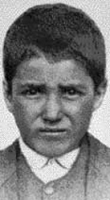
Franz Marto
One of the child visionaries of the apparition of Our Lady of Fatima in 1917 in Portugal.
11 June 1908 at Aljustrel, Portugal
• 4 April 1919 at Aljustrel, Portugal of influenza
• relics translated on 13 March 1952 to the basilica at Cova da Iria
13 May 2017 by Pope Francis
https://catholicsaints.info/saint-francisco-marto/
Like his three brothers, he became a Premonstratensian monk at the monastery in Hradisko, Moravia (in modern Slovakia). He withdrew from the monastery to live for 30 years as a hermit, but was eventually ordered back to the monastery in 1229 and was soon after elected abbot. He agreed on the condition that he would only serve for three years and could then return to his hermit's shack.
late 11th-century in Strelna, Moravia (modern Czech Republic)
• 4 April 1232 in his hermitage in Hradisko, Moravia (in modern Slovakia) of natural causes
• buried alongside his three brothers in Hradisko in the Church of the Mother of God and Saint George, a structure all the brothers had worked to build
https://catholicsaints.info/blessed-abraham-of-strelna/
Tigernake, Tierney, Tierry, Terry
Son of Dearfraych, daughter of the Irish king Eochod, and a famous general named Corbre. Baptized by Bishop Saint Conleth of Kildare, Ireland. God-son of Saint Brigid of Ireland. Captured by pirates as a child, given to the British king, who placed him in the monastery of Rosnat. Friend of Saint Eoghan. He was a natural, and grew to be a monk whose life was exemplified by an intense love for God, and a penchant for constant work. Upon his he return to Ireland, he was made abbot of Cluanois Abbey in Monaghan. Bishop of Clogher, Ireland.
549
https://catholicsaints.info/saint-tigernach-of-clogher/
• Aleth of Montbard
• Aleth of Zélie
• Adèle, Aleidis, Alèthe, Aletta, Alette, Alice, Alix, Aliz, Alyette, Elisabeth, Ethle
Daughter of the lord of Montbard. Lay woman, married to a man named Tecolin. Mother of Saint Bernard of Clairvaux and other holy children.
• 1105
• relics at Clairvaux, France
• Christ appearing to Aleth as she receives viaticum
• standing with Saint Bernard of Clairvaux
https://catholicsaints.info/saint-aleth-of-dijon/

Fifth century hermit on the banks of the Jordan River. Discovered Saint Mary of Egypt, brought her the Eucharist one Easter, found her dead the next, and reportedly wrote a biography of her.
• monk bringing the Eucharist to Saint Mary of Egypt
• talking to Saint Mary of Egypt across the River Jordan
https://catholicsaints.info/saint-zosimus-of-palestine/

Mercedian friar. Well educated and a Biblical scholar, he was sent from the area of Naples, Italy, to France to work against the rise of Protestantism. His preaching was so zealous and effective that he was murdered by Huguenots. Martyr.
stabbed to death in 1540 at the Saint Eulalia convent in Montpellier, France
https://catholicsaints.info/blessed-thomas-of-naples/
Conval, Conwall
King an area of Scotland, noted for his personal piety, his promotion of the faith, and his refusal to use his civil power to meddle in Church affairs. Noted for his piety by Saint Columba, and mentioned in the ancient Dunkeld Litany.
late 8th century Scotland
824 of natural causes
https://catholicsaints.info/saint-gonval-of-scotland/
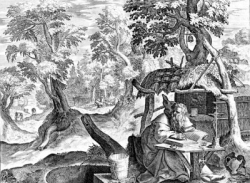
Monk at Theibaid, Egypt and el-Bahnasa, Egypt.
395
writing near a well with a pitcher and bucket close and assorted wild animals watching from a distance, referring to a story that he watered and cared for wild animals
https://catholicsaints.info/saint-theonas-of-egypt/
• Agathopus of Thessalonica
• Agathopedes, Agatopodo
Deacon. Marytred with Saint Theodulus during the persecution of Maximinian Herculius for refusing to surrender holy books.
drowned in the sea with a stone around his neck in 303 in Thessalonica
https://catholicsaints.info/saint-agathopus-the-deacon/
• Theodolus of Thessalonica
• Teodulo...
Lector. Martyred with Saint Agathopus for refusing to surrender holy books during the persecutions of Emperor Maximian Herculeus.
drowned in the sea with a stone around his neck in 303 in Thessalonica
https://catholicsaints.info/saint-theodulus-the-lector/
Bishop of Poitiers, France, from 1087 till 1115. Publicly denounced the sacrilegious tyranny and license of King Philip I and William VI, count of Poitiers and duke of Aquitaine. Helped Blessed Robert d'Arbriselle found the abbey of Fontrevault.
1115 of natural causes
https://catholicsaints.info/saint-peter-of-poitiers/
Guier
Ninth century monk and hermit in Liskeard, Cornwall, England. King Alfred said to have been cured of a serious illness at Gwerir's grave. After his death, the saint's monastery cell was next occupied by Saint Neot.
https://catholicsaints.info/saint-gwerir-of-liskeard/
François of Cairo
Franciscan Friar Minor. Martyred for trying to bring apostates back to the faith.
c.1358 in Cairo, Egypt
https://catholicsaints.info/blessed-francois-de-la-terre-de-labour/
Nicolas of Cairo
Franciscan Friar Minor. Martyred for trying to bring apostates back to the faith.
c.1358 in Cairo, Egypt
https://catholicsaints.info/blessed-nicolas-of-montecorpino/
Emebert
Benedictine monk. Abbot of Saint Peter's in Ghent. Martyr, killed for his defense of icons.
752
https://catholicsaints.info/saint-hildebert-of-ghent/
Vittore
Priest. Bishop of Barcelona, Spain. Martyr.
https://catholicsaints.info/saint-victor-of-barcelona/
Cistercian monk.
c.1190 of natural causes
https://catholicsaints.info/saint-henry-of-gheest/
Fourteen Christians who were martyred together, date unknown. No other information, except the names of 12 of them, has survived - Ingenuus, Julianus, Julius, Matutinus, Orbanus, Palatinus, Paulus, Publius, Quinilianus, Saturninus, Successus, Victor and two whose names have not come down to us.
Thessalonica, Greece
https://catholicsaints.info/martyrs-of-thessalonica-4-april/
• Coine of Kilkine
• Conrad of Weissenau
• George Solitarius
• Guglielmo of Noto
• Maurus Xaverius Herbst
• Merryn
• Pherbutha
CatholicSaints.Info Portable Edition